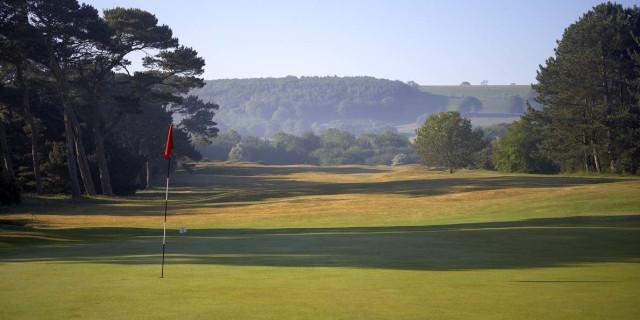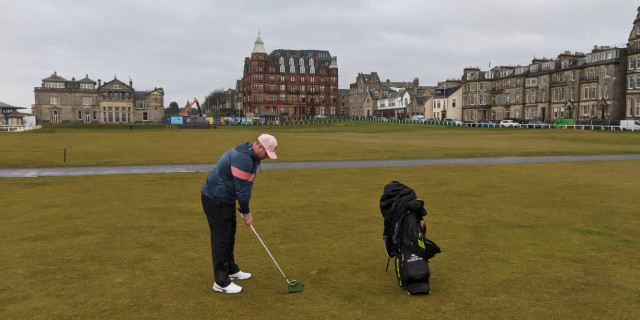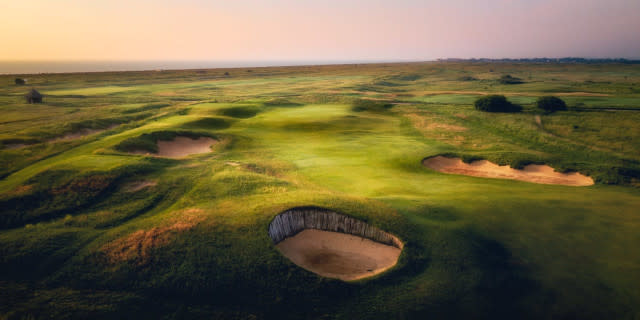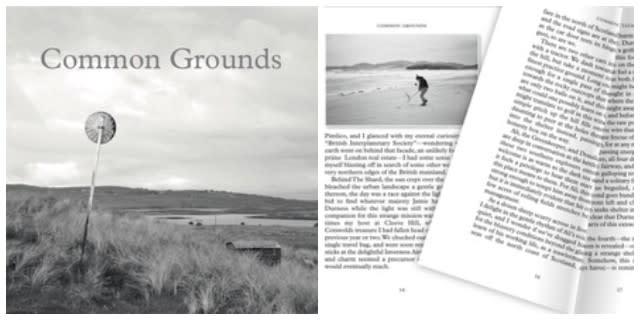
The Greatest Comebacks in Sport
FOR most golf fans it was enough that Tiger Woods was able to get back out there and play again in 2018. But his comeback has turned into a fairytale. Does his victory at the Tour Championship represent the greatest sporting comeback we have ever witnessed? Everybody will have his or her own view and, while it has been remarkable, even Woods would admit that he faces some pretty stiff competition. Here we look at some of the most incredible sporting comebacks - they involve teams and individuals but the one thing they all have in common is that the individuals at the centre of the stories were determined that they were not going to be written off.
There are many different sorts of comebacks - there are the athletes who return from illness and injury, as Woods has done; there are those who defy the ageing process; and there are comebacks within a match or a series. We have looked at a wide cross section, some of which you will be familiar with, others you may be learning about for the first time. Is it just coincidence that this list features so many golfers?
This is not a definitive list, so please let us know about the ones you believe we should have included.
Niki Lauda, Formula One 1976
During the 1976 German Grand Prix, a terrifying crash saw Lauda trapped in his car and engulfed in flames. Lauda suffered severe burns to his head and lost much of his right ear. He was trapped in his car and inhaled toxic gas that damaged his lungs. He was pulled from the wreckage and taken to hospital, where he fell into a coma. For a while, his very survival was touch and go. Incredibly, less than six weeks later, the Austrian returned to the track and took part in the Italian Grand Prix, finishing fourth. He missed out on the world title by a single point in 1976 but won it again the following year and once more in 1984. He is now non-executive chairman of Mercedes F1 and has played an active role in making the sport safer.
England v Australia, Headingley, 1981
The third Test at Headingley is the perfect example of why Test cricket is still the most exciting form of the game. With England following-on, an Aussie victory and a 2-0 series lead seemed certain. England were 500-1 to win the match - it later emerged that one or two of the Australian team had a little flutter on the Poms. When Ian Botham strode to the wicket, his team were tottering at 105 for five. It looked hopeless. But Both had other ideas and smashed a brilliant unbeaten 149 from 148 balls. It meant that the home side were at least able to set Australia a target. And Bob Willis did the rest, claiming 8-43 to give England the most improbable of victories, from which they would go on to win the series 3-1.
Peyton Manning, American Football
Manning had played for the Indianapolis Colts for 14 seasons, enduring neck pains for many years. In 2011, in the off-season, he had multiple neck surgeries and spinal fusion surgery. He was sidelined for the entire year and was widely written off. But he had other ideas. The 2012 season was a disaster for the Colts, who decided to let Manning go. He signed for Denver Broncos and in 2013 rewrote the record books, throwing for 5,477 yards and 55 touchdowns. Manning’s recovery was as inspiring as it was unexpected, and he capped off his career with a second Super Bowl win, in 2016. He retired a month later and is regarded as one of the NFL’s greatest quarterbacks. It is worth noting that Woods also had spinal fusion surgery!
Nick Faldo, The Masters, 1996
Every account of the 1996 Masters makes huge play of Greg Norman’s collapse but let’s not forget that Faldo, who had already won the Green Jacket twice, went into the final round six shots behind the Australian and knew that he had to apply the pressure. And that’s precisely what he did. Faldo won his third Masters courtesy of a flawless final round of 67 in which he did not put a foot wrong. Had Norman shot a 72 or better, he would have won. But as Faldo narrowed the gap, Norman began to try too hard. He eventually stumbled to a 78.
Clint Malarchuk, Ice Hockey, 1989
Malarchuk kept goal for the Buffalo Sabres in the National Hockey League in 1989. After a collision with an opposing player in front of goal, Malarchuk’s throat was split by the blade of a skate, severing his jugular vein. As blood sprayed onto the ice Malarchuk’s team trainer, Jim Pizzutelli, rushed across and stemmed the bleeding with gauze. There is no doubt that Pizzutelli saved Malarchuk’s life. He had served in Vietnam as an army medic and applied heavy pressure to Malarchuk’s throat, only letting up when the goalie needed to breathe. Doctors told Malarchuk to take an extended break from ice hockey. He was back on the ice four days later.
Monica Seles, tennis, 1993
Women’s was gearing itself for a long rivalry between Steffi Graf and Monica Seles. In 1993, Seles was the world’s top-ranked player after winning eight grand slams and a host of WTA tournaments. She was playing in Germany when a crazed Steffi Graf fan named Günter Parche stabbed her with a nine-inch knife during a change of ends. The incision was only an inch and a half deep and the blade just missed her spinal cord. Seles later admitted that although the injury was not severe, she wrestled with psychological issues long after the event. She missed two seasons and returned during the 1995 Canadian Open - incredibly, she won the tournament and reached the US Open final the following month, where she lost to Graf. Seles won the 1996 Australian Open but was never able to recapture her past form.
Ben Hogan, golf, 1949
In 1949, at age 36, Hogan and his wife were involved a head-on collision with a Greyhound bus. He suffered a catalogue of injuries, including a broken clavical, a double fracture of the pelvis, a fractured left ankle, broken ribs and facial injuries. He was told he would probably never walk again. But Hogan was a cussed character. He overcame his injuries, along with blood clots that also nearly claimed his life, and left hospital after 59 days. He began working on regaining his strength and returned to the PGA Tour in 1950, finishing runner-up to Sam Snead in the Los Angeles Open. That would have been enough for most people. Not Hogan. Eighteen months after the accident, he won the 1950 US Open at Merion. He won The Masters and the US Open in 1951, playing just five events and winning three of them. In 1953, he won The Masters, the US Open and The Open Championship. Until Woods, he was the only player to have won three majors in a year. Hogan won nine majors in his career, six of which came after the car crash.
JB Holmes, golf, 2014
Holmes had two PGA Tour victories to his name coming into the 2011 season. After turning pro in 2005, he won the FBR Open, and then won it again in 2008. In 2011, he withdrew from a tournament suffering from vertigo, something he had been battling for months. Doctors diagnosed structural defects in his cerebellum, known as Chiari malformations. Brain surgery followed but the titanium plate placed in his head caused more problems and he required further surgery. After returning to the tour in early 2012, Holmes went on to play 26 events that year. Further injuries meant a reduced 2013 schedule but he claimed a third PGA Tour victory in 2014, and rose to 68th in the world rankings. In 2015 he won again, at the Shell Houston Open. Later that year he achieved his highest world ranking, reaching 19th.
Charlton 7 Huddersfield 6, Second Division, 1957
Charlton had been reduced to 10 men and trailed Bill Shankly's Huddersfield side 5-1 with less than 30 minutes on the clock. But Addicks boss Jimmy Trotter switched Johnny Summers from the left wing to up front, and then outside-left. It might just be the most inspired tactical move ever made as Summers ran riot, scoring four more goals and helping set up the other two goals for the East London side. Trotter said afterwards: "Things had not been coming off for [Johnny] Summers so I moved him from inside-left to centreforward. As a last resort, I switched him to outside-left, his last chance to make good. How well he took it!”
European Ryder Cup team, Medinah, 2012
Jose Maria Olazabal's Europe side went into the final-day singles trailing 10-6. No team had ever come back from such a deficit on foreign soil and this was the singles, where the Americans were traditionally dominant and would surely be again. Ian Poulter had given Europe some hope with an inspired performance in the Saturday four balls in partnership with Rory McIloy but this was surely a lost cause. Except that the Americans began to crumble as Europe’s golfers turned up the heat. The performance was epitomised by Justin Rose, who produced a blistering finish to beat Phil Mickelson - one of the lasting images of that final day was of Mickelson leading the applause for Rose. It was sportsmanship at its finest. Martin Kaymer was the man who holed the putt that ensured Europe could not be beaten. They won 14.5-13.5. The United States had done the same thing in bad tempered match at Brookline in 1999 but this wasn’t meant to happen.
Liverpool FC, Champions League final, 2005
Liverpool were dead and buried in Istanbul after AC Milan took a 3-0 lead in the first half with goals from Paulo Maldini and Hernan Crespo, who grabbed a brace. For Liverpool fans it was all about damage limitation but Steven Gerard had other ideas. He inspired an incredible fightback, scoring one and playing a part as Vladimir Smicer and Xabi Alonso brought the scores level. It went to extra time but there was no further scoring. If ever the outcome of a penalty shootout was written in the stars it was this one and, sure enough, Liverpool came out on top. Goalkeeper Jerzy Dudek was the hero but this was Gerrard’s night. He never had a better night in a Liverpool jersey
Dennis Taylor, The Crucible, 1985
Millions of people stayed up until the small hours to watch Irishman Dennis Taylor win the world snooker championship in Sheffield in 1985, when he defeated Steve Davis on the final black in the decisive frame. What has been forgotten in the mists of time is the fact that Taylor had trailed the Englishman 8-0, which was some mountain to climb in an encounter when the winner was the first man to claim 18 frames.
Manchester United, Premier League, 1996
Sir Alex Ferguson’s side were dead and buried in January as they trailed Newcastle United by 12 points in the Premier League. Newcastle had played a brand of thrilling attacking football that captured the hearts of fans everywhere, but then came an extraordinary rant on TV by their manager, Kevin Keegan when he informed the nation that “I would love it, just love it, if we beat them.” United went on an incredible run and ended up winning the title by four points
About the author

Derek Clements is a seasoned sports journalist and regular Golfshake contributor, specialising in tour coverage, opinion pieces, and feature writing. With a long career in national newspapers and golf media, he has reported on the game across Europe, the United States and Australia. A passionate golfer, he has played and reviewed numerous renowned courses, with personal favourites including Pebble Beach, Kingsbarns, Aldeburgh, Old Thorns and the K Club. His love of the game informs his thoughtful commentary on both professional golf and the wider golfing community.

Be part of the action with a selection of unique golf tournament experiences, from playing in a pro-am with the stars to watching the action at golf’s most illustrious events. Whether it’s the Masters or The Open, The Ryder Cup or WM Phoenix Open, build your own bespoke package with the experts at Golfbreaks.com.
Tags: tiger woods PGA Tour










